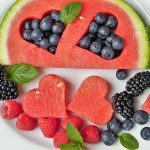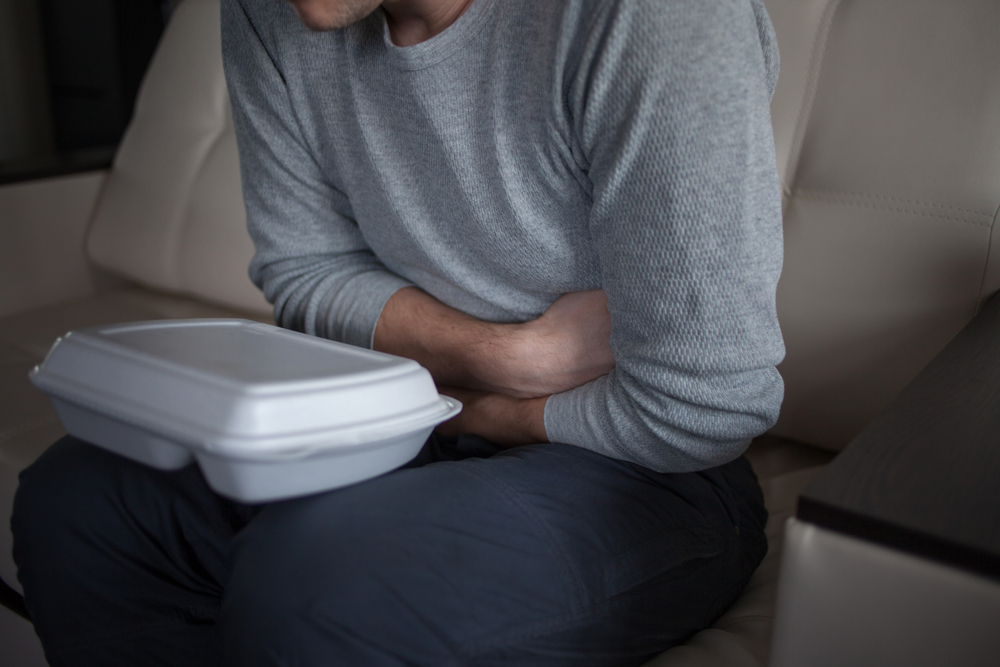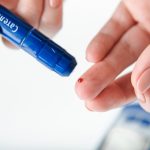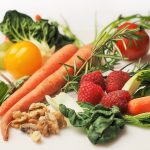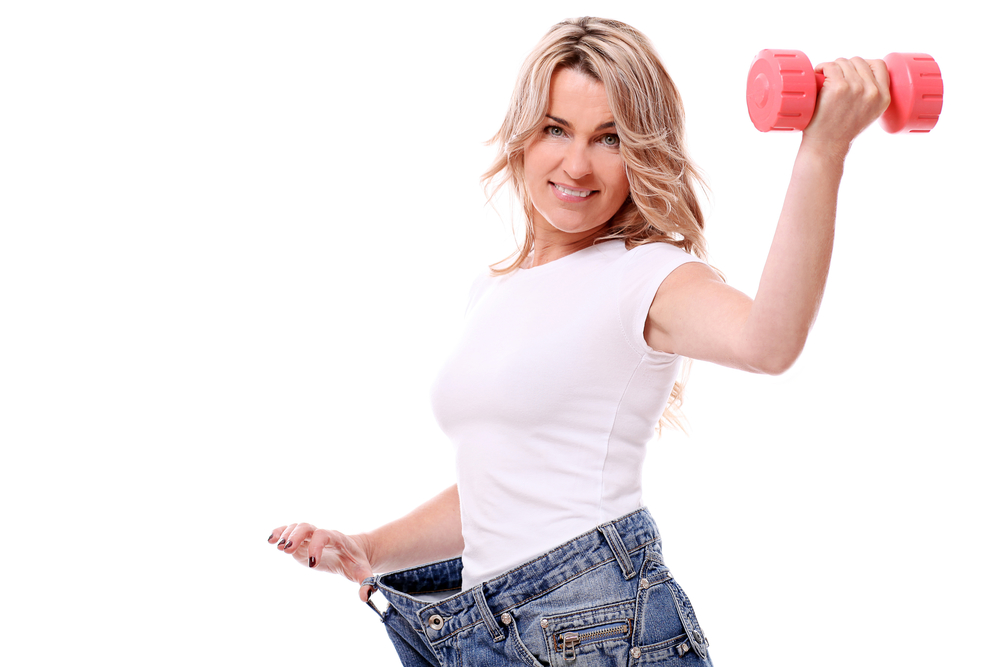The Body Reset diet claims that it will enable you to lose weight without having to eat less or exercise more. The diet is intended for people who have been unable to lose weight using other methods.
The diet may lead to quick weight loss because it has a low calorie allotment to start with. It also emphasizes a realistic exercise regimen. The short-term diet is not likely to result in long-term weight loss.
The Body Reset diet was developed in 2013 by Harley Pasternak. It is based on the 5-Factor Diet, which Pasternak developed.
The diet involves eating mostly smoothies at first to jumpstart weight loss, and then transitioning to a healthier routine that still includes smoothies, but in less frequency. The program includes an exercise plan in addition to the eating plan.
What You Can Eat
The Body Reset program includes three phases: Phase I is five days of consuming only smoothies and snacks; Phase II, is consuming smoothies plus one meal and two snacks per day; and Phase III is returning to one smoothie per day, plus two meals and two snacks.
After the third five-day phase, you’ll be able to have two meals per week in which you can eat and drink whatever you want.
The diet consists mostly of low-fat foods, but also includes some healthy fats from nuts, seeds, and avocados.
The company focuses on lean protein, largely from milk, for their smoothies, as well as calories from high-fiber carbohydrates which come from any fruit or vegetable.
1. Body Reset Smoothies
The most important part of the Body Reset system is the smoothies. There are three categories of smoothies: white (breakfast), red (lunch), and green (dinner).
The breakfast smoothie includes an apple, pear, or peach, a banana, a few almonds, milk, yogurt, and spices to taste.
The lunch or red smoothie includes raspberries, blackberries, half an orange, one scoop of protein powder, and one tablespoon of ground flaxseed.
To make a green smoothie, blend two cups of greens (spinach, kale, baby arugula, or romaine lettuce), a pear, grapes, Greek yogurt, avocado, and lime juice.
Six recipes are provided for each type of smoothie. Instructions are provided for making substitutions, such as using almonds instead of avocado or tofu instead of Greek yogurt.
2. Fruits and Vegetables
Higher-fiber fruits and vegetables are especially important for snacks in the Body Reset diet. The skin of fruits like apples and pears contains important nutrients, so it’s better to eat them with the skin on instead of peeling them off. For snacks, the diet encourages eating:
3. Milk and Yogurt
Pasternak thinks that dairy products have gotten an unfair rap in recent years and that they don’t deserve their bad reputation. He points out that milk has been a part of human diets for thousands of years and that it contains high levels of protein, calcium, vitamin D, and other essential nutrients.
- Plain nonfat Greek yogurt
- Nonfat milk
- Non-dairy milk products
4. Nuts and Seeds
- Almonds
- Walnuts
- Flaxseeds
5. Whole Grains
Any grain products should be whole grain; for example:
- Popcorn
- Whole-grain crackers
- Whole wheat tortillas
- Whole grain bread
6. Lean Protein, Meat, and Fish
The later phases of the Body Reset diet call for solid meals, many of which feature moderate amounts of lean protein sources, such as:
- Steak
- Chicken
- Fish
- Shrimp
- Egg whites
7. Snacks
You will be eating low calorie snacks twice a day for the entire 15 days of the diet. The snacks should have 150 calories, 5 grams of protein, 5 grams of fiber, and be low in sugar. Examples include:
- edamame
- plain air-popped popcorn
- celery with peanut butter
- whole wheat crackers with fat-free cheese
- apple slices with deli turkey
8. Meals
Phases 2 and 3 involve adding homemade solid meals. The book provides recipes for meals that have 230-565 calories. The recipes in the cookbook use whole foods that have undergone minimal processing. They contain a balance of protein, fiber, and healthy fats. Examples include:
A salad is a dish made of leafy greens and chopped vegetables, fruit, nuts, and lean protein like legumes or chicken. The dish is usually served with a homemade olive-oil-based dressing.
Whole grain bread, deli meat, veggies, and low fat condiments or cheese are all ingredients that can be used to make a sandwich.
Reduced sodium broth is used to make soups with vegetables, seasonings, and lean protein like legumes or chicken breast. The soup is served with whole grain bread.
Stir-fries are a quick and healthy meal option that typically include lean protein, vegetables, seasonings, and either brown rice or soba noodles.
Only water, flavored water, coffee, and unsweetened tea are allowed.
What You Cannot Eat
1. Fatty Foods
- Fried foods
- Egg yolks
- Bacon
- Sausages
2. Low-Fiber Fruit and Vegetables
- Bananas
- Melons
- Potatoes
3. Refined Grains
- White bread
- White rice
- Chips
- Crackers (non-whole grain)
4. Sugary Foods and Drinks
- Soda
- Candy
- Sweetened coffee beverages
Preparing the Body Reset Diet and Tips
Pasternak argues that grazing throughout the day— rather than consuming two or three large meals—can help stabilize blood sugar levels, potentially leading to decreased hunger. You should expect to feel hungry on the diet, especially in the first two phases.
The diet also advocates making good nutritional decisions. This means creating a routine so that you do not give in to unhealthy snacks when you are hungry and become a more efficient eater by ensuring your calories have nutritional value.
The diet also includes a fairly simple exercise program. You’ll start by walking a minimum of 10,000 steps per day. The walking routine is supplemented with three days per week of resistance training.
For the final phase of the program, you should do resistance training five days a week, plus make sure to walk at least 10,000 steps each day.
A blender is necessary for the Body Reset diet to be successful.
Blending is better than juicing because blenders are easier to operate and clean, juicing requires more produce to achieve the same volume of food, and blenders utilize all the fibrous parts of the fruits and vegetables, which contain most of the nutrients.
Although the smoothie recipes can be modified for any blender, the Body Reset diet recommends a blender that:
- Operates at a minimum of 500 watts, so that there’s enough power to blend harder produce and nuts (a blender that can grind seeds or cacao beans is a bonus)
- Includes a large pitcher and a heavy base
- Has a design that’s easy to clean
If your blender is not as powerful, you may need to change some recipes. Use smaller pieces of almonds rather than whole nuts, and use flaxseed that has already been ground up instead of whole flaxseed.
The diet plan consists of 15 days, followed by a meal plan with two “free meals” a week where you can eat whatever you want. These are given as a reward to help people feel less deprived.
Pasternak claims that if you never let yourself eat your favorite foods, you are more likely to overeat when you finally do allow yourself to have them.
The diet does not have an official end point for weight loss and maintenance after the first 15 days. Pasternak believes that the routine and habits you establish during the first 15 days should be followed for the rest of your life.
The Body Reset Diet is divided into three phases. Each phase lasts 5 days and has a specific meal plan of smoothies, snacks, and solid meals.
Phase 1 – Breakfast: 1/2 grapefruit, 1 slice whole-wheat toast, 1 tsp. margarine, 1 egg cooked in 1 tsp. oil – Lunch: 3 oz. any type of lean protein, 1 cup steamed broccoli, 1 cup steamed cauliflower, 1/2 cup carrots, 1 tsp. olive oil – Dinner: 2 cups spinach leaves, 2 oz. grilled chicken, 1/2 roasted red pepper, 1 tsp. olive oil
Phase 2 – Breakfast: 1/2 grapefruit, 1 slice whole-wheat toast, 1 tsp. margarine, 1 egg cooked in 1 tsp. oil, 1 cup berries – Lunch: 3 oz. any type of lean protein, 1 cup steamed broccoli, 1 cup steamed cauliflower, 1/2 cup carrots, 1 tsp. olive oil – Dinner: 2 cups spinach leaves, 2 oz. grilled chicken, 1/2 roasted red pepper, 1 tsp. olive oil, 1 cup sautéed mushrooms
Phase 3 – Breakfast: 1/2 grapefruit, 1 slice whole-wheat toast, 1 tsp. margarine, 1 egg cooked in 1
Phase 1
- Breakfast: a white smoothie made with fat-free milk, plain nonfat Greek yogurt, banana, sliced red apple, raw almonds, and cinnamon
- Snack 1: celery sticks with almond butter
- Lunch: a red smoothie made with raspberries, blueberries, orange, vanilla protein powder, and flax seeds
- Snack 2: air-popped popcorn
- Dinner: a green smoothie made with fresh spinach, avocado, pear, grapes, plain nonfat Greek yogurt, and fresh lime juice
Phase 2
- Breakfast: a white smoothie made with plain nonfat Greek yogurt, peaches, raspberries, pistachios, ginger, and fresh lime juice
- Snack 1: whole wheat crackers with hummus
- Lunch: a red smoothie made with raspberries, orange, almond milk, and vanilla protein powder
- Snack 2: boiled edamame
- Dinner: a roast beef sandwich on whole wheat bread
Phase 3
- Breakfast: a white smoothie made with plain nonfat Greek yogurt, mango, pineapple, banana, and flax seeds
- Snack 1: a pear with deli turkey slices
- Lunch: homemade butternut squash soup
- Snack 2: whole wheat crackers with peanut butter
- Dinner: chicken and vegetable stir-fry with brown rice
The book that comes with the diet has a lot of other meal options that fit the diet’s guidelines.
The Body Reset diet recommends following a specific meal pattern that consists of eating five times per day with smoothies and light meals.
Benefits of the Body Reset Diet
The principles of the Body Reset Diet are based on scientific evidence, even though the diet itself has not been studied. Here are some potential benefits of the diet.
1. May help you lose weight
The Body Reset Diet likely causes weight loss — at least in the short term.
When you want to lose weight, you need to take in fewer calories than you burn. This plan is made up of low calorie smoothies, snacks and meals, so you’ll probably end up eating fewer calories than you need. The plan’s exercise regimen also helps you burn calories.
This plan provides around 1,200-1,400 calories per day, which is much lower than the 2,000 calories recommended for adults to maintain their weight.
A study found that people who followed a 1,200 to 1,500 calorie diet consisting of two meals and two meal replacement shakes per day lost an average of 15 pounds.
The study found that weight loss was possible over the course of a year-long plan. There are a few things to remember if you’re trying to lose weight. Your age, weight, height, and gender all play a role in how easy or difficult it will be.
2. May keep you motivated initially
If you manage to lose weight in the 15 days that you are on the Body Reset Diet, it may motivate you to keep going with the diet for a longer period of time. Research has shown that people who lose weight quickly in the beginning of their diet are more likely to be successful in the long term.
In other words, people who lose less weight in the beginning are more likely to quit the program. The researchers suggest that there may be a discrepancy in motivation levels. People who see results from a program are more likely to continue using it because they think it is effective.
3. High in nutrient-rich foods
The diet focuses on eating nutritious foods like fruits, vegetables, whole grains, nuts, legumes, lean proteins, and low fat dairy. A well-rounded diet includes these foods that offer essential vitamins and minerals.
The Body Reset Diet is also packed with fiber, which comes from the whole foods in its smoothies, snacks, and solid meals. A diet high in fiber can help you maintain a healthy weight and reduce your risk of type 2 diabetes, heart disease, certain cancers, and other chronic illnesses.
This diet may help you lose weight and keep you motivated in the beginning. Moreover, it’s comprised of highly nutritious foods.
Potential Downsides
There are potential downsides to the Body Reset Diet even though it might help you lose weight.
1. May overly restrict calories
The diet provides around 1,200-1,400 calories per day, but there are slight recipe modifications available for people who weigh more than 175 pounds.
This calorie restriction is too severe for some people and may lead to nutrient deficiencies. In other words, insufficient calorie diets may not provide the proper amounts of essential nutrients for optimum wellness.
Not only does extreme calorie restriction result in slowed metabolism, but it also leads to reduced muscle mass. In other words, while the diet may causes some muscle loss, the protein-rich foods and resistance exercise may help to reduce that loss.
2. May be hard to follow long term
The research suggests that any low calorie diet can help you to lose weight, as long as you are able to stick to it. An analysis of over 500 people following weight loss programs has found that hunger levels are a key predictor of whether someone will drop out of the program.
The Body Reset Diet includes a lot of fiber and protein, which may help you feel fuller and not as hungry. The meals that Liquidia offers that are in liquid form, such as smoothies, may not be as filling as meals that are in solid form. A low calorie diet also causes the release of hunger hormones, which is likely why people give up on them.
The Body Reset Diet may cause some people to severely restrict their calorie intake, which can lead to decreased muscle mass, a slow metabolism, and nutrient deficiencies.
Is body reset diet a healthy choice?
Other liquid protein or smoothie diets are likely to have similar results to the Body Reset diet. However, it falls short of U.S. The USDA has released guidelines for balanced and nutritious diets, called MyPlate. These guidelines are intended to promote healthy weight loss.
The U.S. The 2020–2025 Dietary Guidelines for Americans issued by the Department of Agriculture recommends consuming a variety of nutrient-dense, whole foods. These include whole vegetables and fruits, whole grains, lean protein, low-fat dairy products, legumes, and healthy fats.
A liquid diet means you’re not consuming whole foods, especially protein from food sources.
The USDA recommends a daily calorie intake of 2,000 calories for weight management and 1,500 a day for weight loss. The Body Reset diet provides a plan with around 1,200 calories in phase I.


